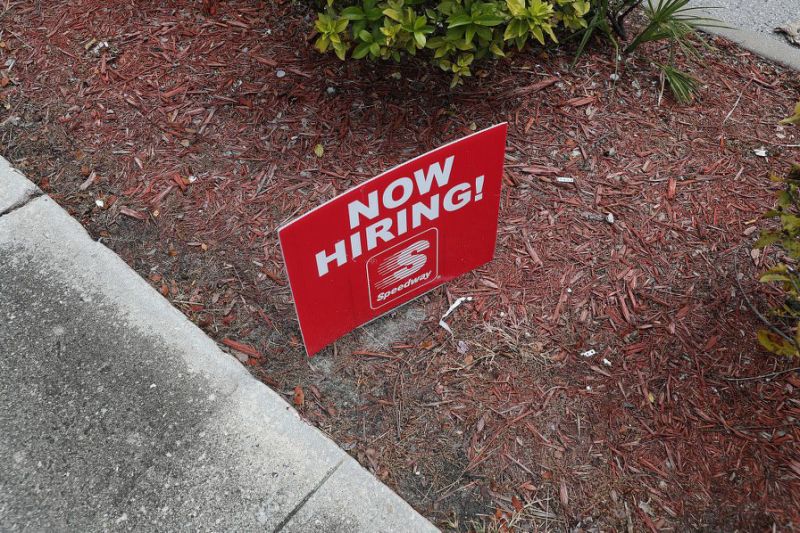
(Bloomberg Opinion) — The most disappointing feature of the most recent jobs report is that wages did not grow very much, even though the U.S. economy is at or near full employment. For 2019, wages grew at 2.9% — but, since inflation is about 2%, real wage growth is about 1%. That’s hardly impressive. The last decade was the second-slowest for payroll growth since the 1940s.
If the roots of this slow wage growth were better understood, there might be better ideas about how to boost it. Unfortunately, there are few easy fixes, and at this point there is not much the Fed can do about it.
For large groups of U.S. workers, wage growth has been slow for decades. Inflation-adjusted average hourly wages, for instance, have seen only marginal improvement since the 1970s. Of course, those numbers are somewhat misleading because they do not pick up the growing dollar value of employer-supplied health care benefits, or of unpriced internet services, such as time spent on Facebook. Still, if the past numbers are unimpressive, it shouldn’t be surprising that the current numbers are too. The productivity performance of the American economy has been subpar for a long time.
A further reason for sluggish wages is that employers have more options. To keep wages from rising past a certain level, employers will consider either automating or outsourcing the work abroad, or perhaps importing comparable goods. So to some extent global wage growth — which has been robust — has substituted for domestic wage growth.
A closely related reason for slow wage growth has to do with changes in the composition of firms. The growing, dynamic firms in the U.S. economy are those with low labor costs as a low share of revenue. This is easiest to see in the rapidly scaling tech firms, where software enables the company to reach and serve the entire world with relatively few workers. Highly labor-intensive firms (nursing homes, say) find it harder to grow at the same pace, and so labor’s share in the U.S. economy has tended to fall for that reason.
Yet another reason for sluggish wages is that more companies have been experimenting with options and equity rewards, to encourage workers to add more value. Much of the compensation in Bay Area start-ups, for instance, comes in the form of equity. The substitution of equity gains for labor income is all the more potent in a bull market, as there is now.
What then to do to spur wage growth? Since most of these forces are long-term and structural in nature, they are not easy to change.
One possible ploy is to encourage more business investment, so as to boost wages and worker productivity. That is good economics, but it is not easy to pull off. Interest rates already are low, and the aging of the world population will reverse the “savings glut” and make capital more scarce over the next several decades.
Another strategy is to increase societal and governmental support of science, to boost discovery and raise the long-term economic growth rate. That too is a good idea, but it takes a long time for scientific breakthroughs to translate into higher living standards.
The main effective remedy for sluggish wage growth, then, may be reduce the cost of living through lower prices for homes and apartments, health care, and higher education. If workers demand higher wages at the bargaining table, employers might respond by outsourcing or automating. But if workers get higher net real wages because housing costs are falling, employers are less likely to respond with internal adjustments.
In other words, the frontier areas for overcoming wage stagnation are several-fold. First is a greater freedom to build, so that housing supply can rise and prices can fall. That also would enable more upward mobility by easing moves to America’s more productive (but also more expensive) regions. Second are steps to lower the cost of medical care through greater competition and price transparency. Third, American higher education is hardly at its optimum point of efficiency, innovation and affordability.
If those sectors displayed some of the dynamism and innovativeness of that marks America’s tech sector, the combination of declining prices and rising quality could give living standards a boost. And since rent, health care and tuition tend to be higher shares of the incomes of poorer people, those changes would help poorer people the most.
To repeat: It’s a hard problem. But there’s a pretty simple principle that should guide policy: The longer that wage stagnation continues, the more urgent these microeconomic issues become.
To contact the author of this story: Tyler Cowen at [email protected]
To contact the editor responsible for this story: Michael Newman at [email protected]
This column does not necessarily reflect the opinion of Bloomberg LP and its owners.
Tyler Cowen is a Bloomberg Opinion columnist. He is a professor of economics at George Mason University and writes for the blog Marginal Revolution. His books include “Big Business: A Love Letter to an American Anti-Hero.”
<p class="canvas-atom canvas-text Mb(1.0em) Mb(0)–sm Mt(0.8em)–sm" type="text" content="For more articles like this, please visit us at bloomberg.com/opinion” data-reactid=”39″>For more articles like this, please visit us at bloomberg.com/opinion
©2020 Bloomberg L.P.





